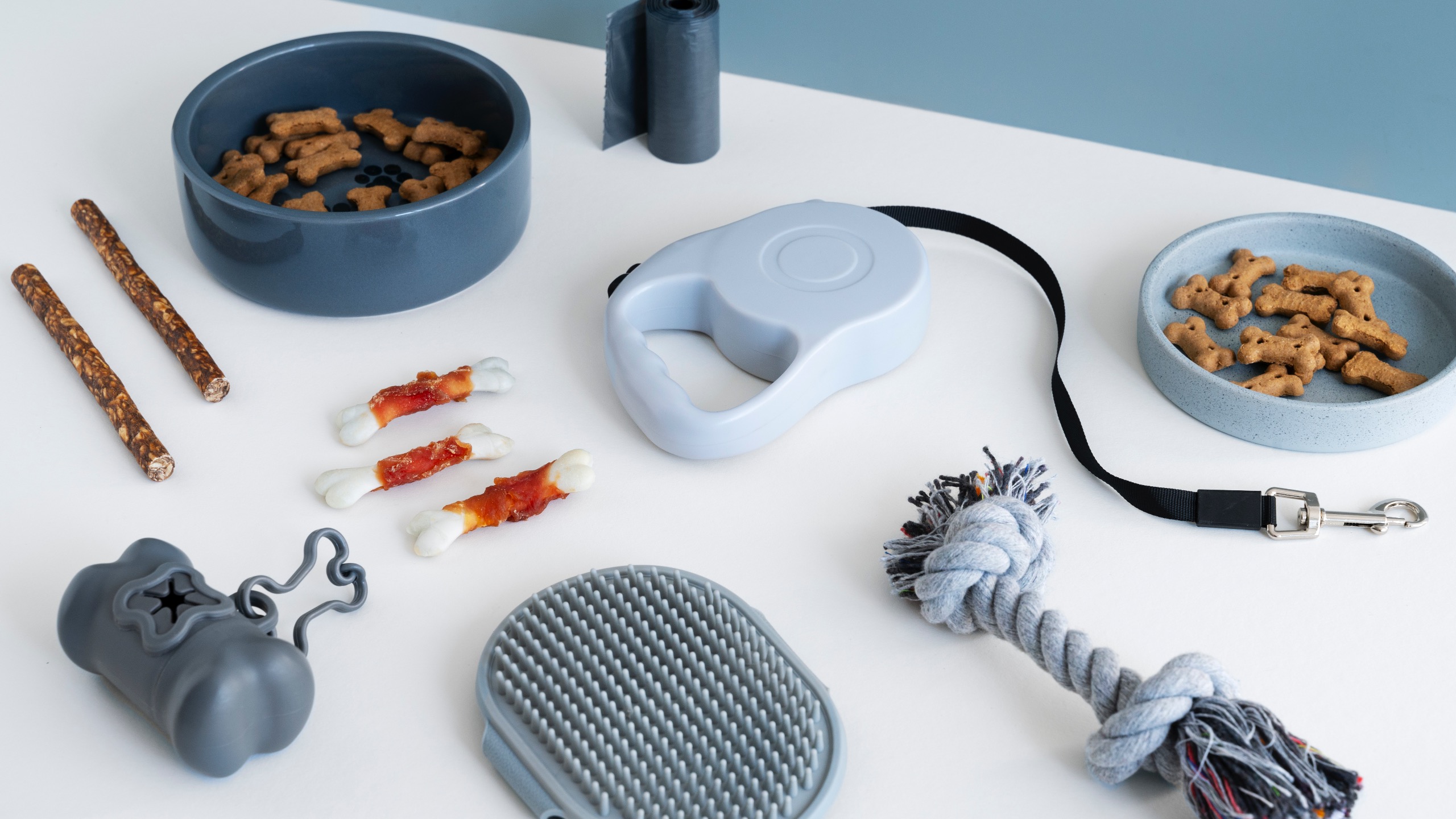Training a dog requires the right tools to ensure success. The variety of tools available can be overwhelming, but each one has a specific purpose to help guide your dog toward good behavior. Using the right tools makes it easier for your dog to learn commands and skills. Whether you’re teaching basic obedience or advanced tasks, the correct training tools play a crucial role in the process.
In this guide, we’ll explore the most common dog training tools, their uses, and how to choose the best one for your dog’s needs.

1. Leashes and Collars
Leashes and collars are essential for training. They allow you to control and direct your dog while walking or during training sessions. You can find them in various styles, each designed for specific training goals.
- Standard Leash: This basic tool is perfect for daily walks and obedience training. Made from materials like nylon or leather, the standard leash provides control. You can pair it with a simple collar for more effective training.
- Retractable Leash: A retractable leash lets your dog explore more freely. However, it allows you to reel your dog back in quickly when needed.
- Training Collar: Also called a flat collar, this is the most common collar for leash training. It fits comfortably around your dog’s neck and can be used with different leashes or harnesses.
2. Harnesses and Head Collars
Harnesses offer a great alternative to traditional collars. They’re especially helpful for dogs with breathing problems or those who pull on the leash. Harnesses distribute pressure across the chest, preventing strain on the neck. Here are a few types to consider:
- Back-Clip Harness: The leash attaches to the back of this harness. It works well for calm, well-behaved dogs but may encourage pulling if the dog isn’t trained to walk on a loose leash.
- Front-Clip Harness: This design allows the leash to attach to the front. It helps discourage pulling by turning your dog toward you when they pull.
- Head Collar: A head collar, like a gentle leader, fits around your dog’s nose and neck. It gives you better control, making it useful for stronger dogs or those who tend to pull.
3. Clickers and Treats
Clicker training is an effective and popular method. The clicker makes a distinct sound when pressed, marking the exact moment your dog performs a desired action. This method improves learning by providing clear signals.
- Clicker Training: Press the clicker when your dog does something right, such as sitting or staying. Then, reward your dog with a treat. This method helps your dog associate good behavior with rewards.
- Treats: Use small, healthy treats to reinforce good behavior. These positive rewards help your dog understand which actions are expected.
4. Remote Trainers (Shock Collars)
Remote trainers, sometimes called shock collars, are more advanced tools. They provide a mild electric stimulus to correct undesirable behavior. While controversial, these collars can be effective for training difficult dogs.
- How It Works: A remote trainer includes a collar and a handheld device. The device sends an adjustable electric pulse to the collar, getting your dog’s attention and redirecting them to more desirable behavior.
- When to Use: Remote trainers should only be used under professional guidance. It’s important to use them responsibly, as overuse can cause confusion or distress for your dog.
5. Training Dummies and Target Sticks
Training dummies and target sticks are often used for more advanced training. These tools are especially useful for dogs trained in sports or specialized tasks.
- Training Dummies: These are often used in scent training or retrieving exercises. Filled with a strong scent, they help your dog focus on specific smells and learn to retrieve objects.
- Target Sticks: A target stick is a tool that guides your dog to specific actions. By teaching your dog to touch the stick, you can direct them to perform tasks like jumping or touching an object.
6. Puzzle Toys and Interactive Games
Training isn’t just about teaching commands. Mental stimulation is also key to keeping your dog happy and well-behaved. Puzzle toys and interactive games are great for keeping your dog entertained and sharp.
- Puzzle Toys: These toys hide treats inside. Your dog has to figure out how to get them. Puzzle toys encourage problem-solving and provide mental stimulation.
- Interactive Games: Playing games like “hide and seek” or “find the treat” keeps your dog engaged. These games help your dog use their nose and mind, while also strengthening your bond with them.
Choosing the Right Training Tools
When choosing training tools, consider your dog’s breed, personality, and the specific behavior you want to address. Not all tools will work for every dog, so you may need to try different options. Additionally, always prioritize positive reinforcement techniques, which foster a stronger bond between you and your dog.
Introduce tools slowly and in a positive, calm environment. Avoid overusing certain tools, like remote trainers, unless recommended by a professional. Proper use and consistency are essential for training success.
Conclusion
Choosing the right training tools is vital for your dog’s success. Whether you’re using a simple leash or more advanced tools like remote trainers, the key is consistency and positive reinforcement. With the right tools and approach, you can train your dog to be well-behaved, confident, and happy.
